Miscellaneous food crops (Crop Group 20) include 20 diverse unique crops including asparagus, grapes, okra, strawberries and sunflowers. Descriptions of the acreage and values of these crop types are shown in Table 19.
 Aloe vera. A perennial succulent grown from vegetative parts (“pups”) lasting four to seven years producing juice for cosmetic, juice and pulp uses, or for healing wounds. Three to five basal leaves are hand harvested every six to eight weeks. New apical leaves continue to emerge. The fleshy, pulpy leaves are crushed, pressed to extrude juice or aloe gel, placed in barrels, and hauled to buying points; later juice is concentrated, pasteurized, and/or freeze-dried. Aloe is used in beverages, cosmetics, herbal products, and other uses in a rapidly growing market. Production ranges from small plantings of individual families (as a cottage industry) to commercial fields of 200 acres or more in the U.S. Aloe is also imported from Mexico and Central America. Insect pests include mealybug. Weeds include annual and perennial weeds. Diseases include Phytophthora and Pythium root rot, Erwinia soft rot, and some slime molds.
Aloe vera. A perennial succulent grown from vegetative parts (“pups”) lasting four to seven years producing juice for cosmetic, juice and pulp uses, or for healing wounds. Three to five basal leaves are hand harvested every six to eight weeks. New apical leaves continue to emerge. The fleshy, pulpy leaves are crushed, pressed to extrude juice or aloe gel, placed in barrels, and hauled to buying points; later juice is concentrated, pasteurized, and/or freeze-dried. Aloe is used in beverages, cosmetics, herbal products, and other uses in a rapidly growing market. Production ranges from small plantings of individual families (as a cottage industry) to commercial fields of 200 acres or more in the U.S. Aloe is also imported from Mexico and Central America. Insect pests include mealybug. Weeds include annual and perennial weeds. Diseases include Phytophthora and Pythium root rot, Erwinia soft rot, and some slime molds.
 Amaranth grain. Seed of improved selections are sown to produce a high protein seed grain crop. Commercial amaranth grows 5 to 7 feet and is harvested after frost. Sometimes 2,000 to 4,000 acres planted in Great Plains; at least 100 acres in Texas. Some yard plantings for edible amaranth foliage.
Amaranth grain. Seed of improved selections are sown to produce a high protein seed grain crop. Commercial amaranth grows 5 to 7 feet and is harvested after frost. Sometimes 2,000 to 4,000 acres planted in Great Plains; at least 100 acres in Texas. Some yard plantings for edible amaranth foliage.
Asparagus. Some commercial production in Zavalla County near Crystal City and roadside sales near Bonham, from sandy soils. Insect pests include asparagus beetle, and aphids. Weeds include annual broadleaf weeds. Diseases include Fusarium crown rot and Cercospora leafspot.
 Canola. Rape seed produced for oil production is not a commercial crop in Texas. Some breeding in Kansas indicates some livestock forage potential. Commercial production common in northern plains states and prairie provinces of Canada.
Canola. Rape seed produced for oil production is not a commercial crop in Texas. Some breeding in Kansas indicates some livestock forage potential. Commercial production common in northern plains states and prairie provinces of Canada.
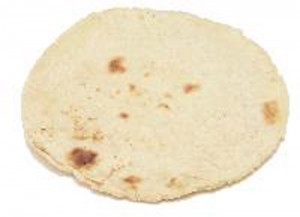 Corn – human food use. More than 100,000 acres of corn grown in Texas for snack and staple foods processing including extruded products (chips), ethnic baked goods, tortillas, corn flakes, meal and other products. Food-grade corn is 80% white types and is produced under contract with irrigation and close adherence to pest management, mycotoxin avoidance, and quality assurance. Key production areas are Winter Garden/Uvalde area and High Plains. Pests include corn earworm, annual weeds, molds, and head diseases similar to corn grown for grain.
Corn – human food use. More than 100,000 acres of corn grown in Texas for snack and staple foods processing including extruded products (chips), ethnic baked goods, tortillas, corn flakes, meal and other products. Food-grade corn is 80% white types and is produced under contract with irrigation and close adherence to pest management, mycotoxin avoidance, and quality assurance. Key production areas are Winter Garden/Uvalde area and High Plains. Pests include corn earworm, annual weeds, molds, and head diseases similar to corn grown for grain.
Corn – pop. Production irrigated to assure good yields and consumer quality. Harvested with a special combine with smaller screens and modified cylinder bars to avoid kernel damage. Hard starch absorbs moisture with a 40-fold expansion when heated; kernels invert to make a snack food. Production is similar to field corn but with more pest scouting and treatment to avoid corn earworm damage. Pest problems similar to those of field corn. Quality assurance includes close adherence to pesticide labels.
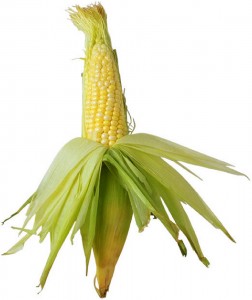 Corn – sweet. High sugar content at soft dough stage distinguishes it from field corn. Commercial production for processing as canned or frozen product. Grown in small plots for fresh product; local sales in East Texas. Some shipped to area grocery stores in August and September. Both white and yellow types. Most common pests include fall armyworm, corn earworm, summer annual weeds, and foliar diseases. Other pests are similar to field corn.
Corn – sweet. High sugar content at soft dough stage distinguishes it from field corn. Commercial production for processing as canned or frozen product. Grown in small plots for fresh product; local sales in East Texas. Some shipped to area grocery stores in August and September. Both white and yellow types. Most common pests include fall armyworm, corn earworm, summer annual weeds, and foliar diseases. Other pests are similar to field corn.
Figs. Low growing, highly branched shrub-like tree in southern part of state. Easy to grow and a common backyard crop. Subject to freeze kill but usually regrows. Soft pear-shaped fruit has rough texture but tender exterior and a delicious rose-colored flesh, great for fresh use or jams. Types include “wild turkey” (a land race) and “Alma”. Grasshoppers love the foliage and fruit in some years. Diseases include root rot nematodes, rust, and fruit rots.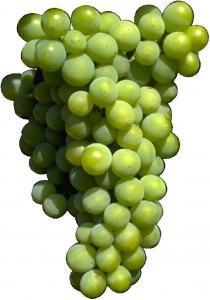
Grapes-fresh. Production in small plantings for local, self-pick or retail sales. Pests similar to wine grapes.
Grapes – wine types. The early history of grapes in Texas goes back three centuries to when early Spanish missionaries brought favorite selections (“Mission”) from Mexico and set up mission outposts. Major expansion occurred in the past three decades, as grapes moved from a backyard crop to a major industry. Today wine grapes are produced in: Far West Texas/Ft. Stockton (1,000 acres), 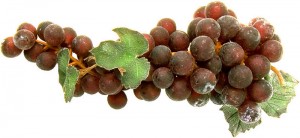 High Plains (1,000 acres), Hill County/Fredericksburg (500 acres), North Central Texas/Stephenville (500 acres). Industry employs about 2,300 workers and generates over $100 million economic impact. Texas ranks fifth in U.S. wine production and over 95% of the production is marketed within the state. Insect pests includes the glassy-winged sharpshooter. A host of diseases including Pierce’s disease, black rot, downy and powdery mildews, cotton root rot, and virus complex.
High Plains (1,000 acres), Hill County/Fredericksburg (500 acres), North Central Texas/Stephenville (500 acres). Industry employs about 2,300 workers and generates over $100 million economic impact. Texas ranks fifth in U.S. wine production and over 95% of the production is marketed within the state. Insect pests includes the glassy-winged sharpshooter. A host of diseases including Pierce’s disease, black rot, downy and powdery mildews, cotton root rot, and virus complex.
Okra. A common backyard and roadside market crop in East Texas, and grown commercially in LRGV and WG for freezer plants Some production is imported from Mexico. Insects pests include white fly and fire ants. Diseases include soil borne wilts, root and crown rots, nematodes, leaf spot, and cotton root rot.
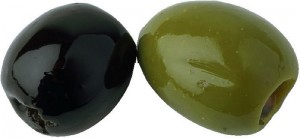 Olives. The drought-tolerant evergreen olive tree is native to the Mediterranean. Texas has small plantings in Hays County and southward into the Hill Country. Production mostly for novelty fruit and oil production. Makes a nice ornamental planting in southern areas. Several pests, including xylella – bacterial leaf scorch.
Olives. The drought-tolerant evergreen olive tree is native to the Mediterranean. Texas has small plantings in Hays County and southward into the Hill Country. Production mostly for novelty fruit and oil production. Makes a nice ornamental planting in southern areas. Several pests, including xylella – bacterial leaf scorch.
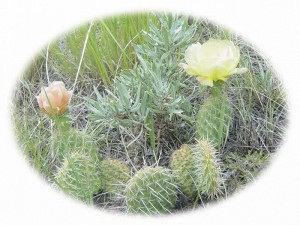 Prickly pear cactus. Cactus infests over 100,000 acres of range and pastureland in Texas but produces a pear-like fruit that may be eaten fresh or processed. Most cactus lines have thorns but some are thornless. Plant parts are harvested (carefully) by hand or processed. The cladophylls or pads are processed for an ethnic food with a flavor similar to watermelon, with a seedy, moist flesh. Pads may be sliced or chopped for salads or cooked like snap beans. “Nopalitos” are green pads shredded in a French green bean style and canned, with a tangy green bean taste. The “pearfruit” is also harvested after the cactus has bloomed and the fruit has turned colors (usually yellow to red). “Pears” are rolled in sand to remove spines, blanched, and cooked into a preserve, jelly, or salsa-like material. No known economic pests. “Pear” is an important reserve forage and in times of severe drought ranchers burn off the spines so livestock can forage on the pads.
Prickly pear cactus. Cactus infests over 100,000 acres of range and pastureland in Texas but produces a pear-like fruit that may be eaten fresh or processed. Most cactus lines have thorns but some are thornless. Plant parts are harvested (carefully) by hand or processed. The cladophylls or pads are processed for an ethnic food with a flavor similar to watermelon, with a seedy, moist flesh. Pads may be sliced or chopped for salads or cooked like snap beans. “Nopalitos” are green pads shredded in a French green bean style and canned, with a tangy green bean taste. The “pearfruit” is also harvested after the cactus has bloomed and the fruit has turned colors (usually yellow to red). “Pears” are rolled in sand to remove spines, blanched, and cooked into a preserve, jelly, or salsa-like material. No known economic pests. “Pear” is an important reserve forage and in times of severe drought ranchers burn off the spines so livestock can forage on the pads.
Safflower. This summer annual produces seed in 120 to 150 days; primarily raised for vegetable oil and residual meal for livestock. Head and seeds sometimes used as a spice. Periodically grown in Texas.
Sesame. Acreage varies with federal farm program and weather. Planted as a “catch crop” after storm-damaged cotton. Planted in the Winter Garden/Uvalde area, extending northward into the Rolling Plains/Vernon area. Contract production extends into southwest Oklahoma and southern Kansas. Since sesame is a poor competitor as a seedling, soil-applied herbicides are essential. Seed pods shatter easily and some foliar and pod diseases reduce yields. Also planted in wildlife food plots for doves (see Non-food crops – Wildlife). Check out the awesome crop profile on this unique crop and its history.
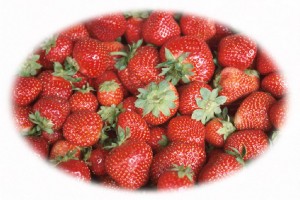 Strawberries. Produced under irrigation south of San Antonio for roadside, local markets, or self-pick. In East Texas, crop produced under plastic row covers promotes early spring crop and protects blossoms. Harvested April to June. Insect pests include slugs, fire ants, flea beetles, and birds. Weeds include annual weeds. Diseases include Cercospora leaf spot, red stele, anthracnose, virus complex, and Verticillium wilt.
Strawberries. Produced under irrigation south of San Antonio for roadside, local markets, or self-pick. In East Texas, crop produced under plastic row covers promotes early spring crop and protects blossoms. Harvested April to June. Insect pests include slugs, fire ants, flea beetles, and birds. Weeds include annual weeds. Diseases include Cercospora leaf spot, red stele, anthracnose, virus complex, and Verticillium wilt.
Sugarcane. Grown in three counties in the LRGV with three to six years of production
from the ratoon or stubble. Products include sucrose, molasses, and bagasse (the residual fiber usually burned for steam generation and electricity to operate the mill). Insect pests include borers but biological control suppresses them. Weeds include sunflower, pigweed, guineagrass, johnsongrass, nutsedge, bermudagrass, morningglory, and winter annual broadleafs. 100% of the crop is sprayed. Diseases include ratoon stunting disease, leaf scald, rust, smut, yellow leaf syndrome but no fungicides are applied. See pests and pesticides in U.S. sugarcane, crop profile or brief for full details.
 Sunflower. Seed produced in the High Plains; has good color and high oil content; meal is used for livestock feed. Crop has both cold and drought tolerance and adversity resistance (hail, wind, sand abrasion) yet is not highly profitable since returns are tied to world vegetable oil prices. Texas usually grows 17,000 to 20,000 acres for oil and 40,000 to 46,000 acres for confectionery use (60%) and bird seed (40%). Yields average 1,400 pounds per acre. Insect pests include sunflower head moth and seed weevil. Diseases include downy and powdery mildew, Rhizopus head rot, cotton root rot, and Sclerotinia wilt. Clearfield herbicide-resistant hybrids make weed control easier. Weeds are similar to those in soybeans and grain sorghum.
Sunflower. Seed produced in the High Plains; has good color and high oil content; meal is used for livestock feed. Crop has both cold and drought tolerance and adversity resistance (hail, wind, sand abrasion) yet is not highly profitable since returns are tied to world vegetable oil prices. Texas usually grows 17,000 to 20,000 acres for oil and 40,000 to 46,000 acres for confectionery use (60%) and bird seed (40%). Yields average 1,400 pounds per acre. Insect pests include sunflower head moth and seed weevil. Diseases include downy and powdery mildew, Rhizopus head rot, cotton root rot, and Sclerotinia wilt. Clearfield herbicide-resistant hybrids make weed control easier. Weeds are similar to those in soybeans and grain sorghum.
Sweet sorghum. High-sugar sorghum lines are crushed to extract juice which is then boiled and evaporated to produce cane syrup or molasses. Mostly grown east of I-45 in Texas on less than 10 acre tracts. Majority of U.S. production is in TN and KY. Pest problems similar to those of grain sorghum. Insect pests include aphids/greenbugs. Weeds include annual weeds. Diseases include downy mildew, maize dwarf mosaic virus, smut, anthracnose, rust, charcoal rot, bacterial spot and stripe.
| Crop | Statewide Production | Acreage by Production Region | ||||||
|---|---|---|---|---|---|---|---|---|
| Acres | Dollar Value per Acre | Total Value (dollars in thousands) | Lower Valley | Winter Garden | Plains Region | Far West Texas | Eastern Areas | |
| Aloe vera | 1,500 | $4,300 | $6,450 | 1,500 | 0 | 0 | 0 | 0 |
| Amaranth grain | 100 | $120 | $12 | 0 | 0 | 100 | 0 | 0 |
| Asparagus | 80 | $4,200 | $336 | 10 | 50 | 0 | 0 | 20 |
| Canola | 50 | $120 | $6 | 0 | 0 | 50 | 0 | 0 |
| Corn – food use | 110,500 | $680 | $75,140 | 500 | 10,000 | 100,000 | 0 | 0 |
| Corn – pop | 7,200 | $480 | $3,456 | 100 | 100 | 7,000 | 0 | 0 |
| Corn – sweet | 3,700 | $950 | $3,515 | 700 | 600 | 400 | 0 | 2,000 |
| Figs | 100 | $3,200 | $320 | 0 | 0 | 0 | 0 | 100 |
| Grapes – fresh | 70 | $4,200 | $294 | 10 | 0 | 40 | 0 | 20 |
| Grapes – wine | 3,000 | $3,800 | $11,400 | 0 | 1,000 | 1,000 | 1,000 | 0 |
| Guava | 10 | $1,800 | $18 | 10 | 0 | 0 | 0 | 0 |
| Okra | 1,200 | $1,900 | $2,280 | 200 | 200 | 300 | 0 | 500 |
| Olives | 5 | $400 | $2 | 5 | 0 | 0 | 0 | 0 |
| Prickly pear | 100 | $800 | $80 | 50 | 40 | 0 | 10 | 0 |
| Safflower | 1,000 | $180 | $180 | 0 | 0 | 1,000 | 0 | 0 |
| Sesame | 10,000 | $180 | $1,800 | 0 | 9,800 | 0 | 0 | 200 |
| Strawberry | 210 | $3,600 | $756 | 10 | 100 | 0 | 0 | 100 |
| Sugarcane | 44,000 | $780 | $34,320 | 44,000 | 0 | 0 | 0 | 0 |
| Sunflower | 42,600 | $150 | $6,390 | 1,000 | 500 | 40,000 | 1,000 | 100 |
| Sweet sorghum | 600 | $160 | $96 | 0 | 30 | 0 | 0 | 570 |
| Totals | 226,025 | $650 | $146,851 | 48,095 | 22,420 | 149,890 | 2,010 | 3,610 |
